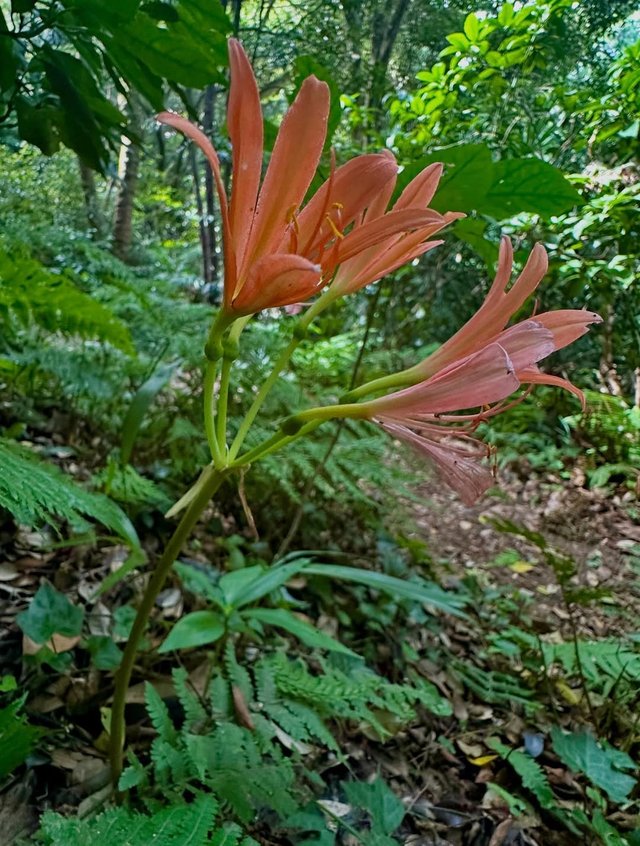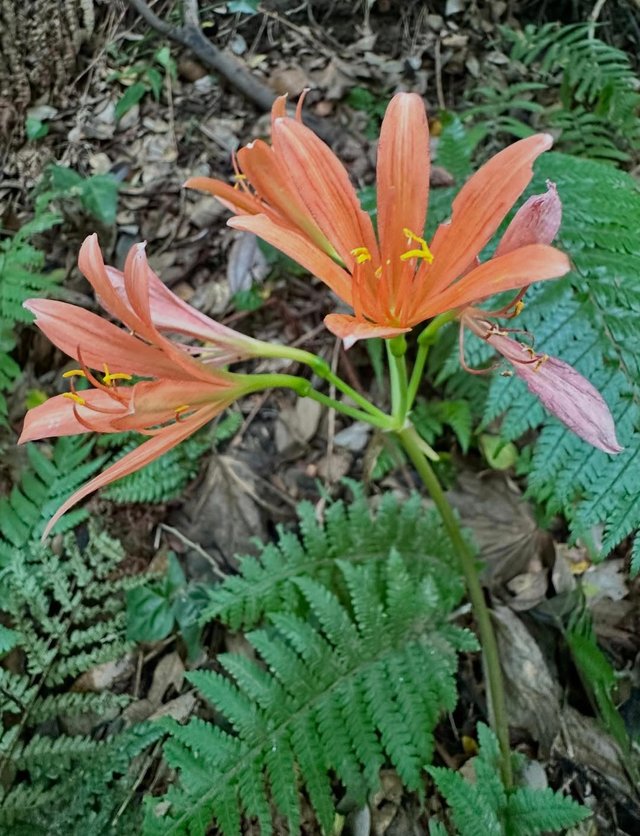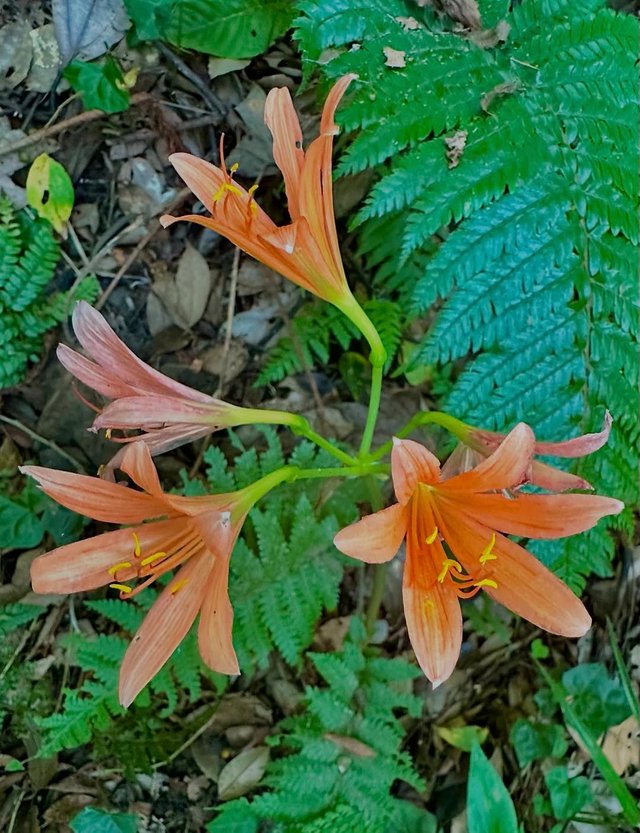Lycoris sanguinea
Lycoris sanguinea is a native to Japan and parts of China, known for its brilliant reddish-orange flowers that bloom in late summer to early autumn. It is a bulbous plant that typically produces strap-shaped, glossy green leaves in the spring, which die back before the flowers emerge, a characteristic behavior known as hysteranthy. The flowering stems rise leafless from the ground, reaching a height of about 30 to 50 centimeters, topped with an umbel of several funnel-shaped flowers with gracefully recurved petals and long, protruding stamens that give them an elegant and somewhat exotic appearance. Lycoris sanguinea prefers well-drained soil, partial shade to full sun, and moderate watering, thriving best in regions with a distinct seasonal temperature change.
The bulbs should be planted with the neck slightly exposed and are best left undisturbed, as they can take a few years to establish and bloom regularly. Often called “surprise lilies” or “magic lilies” due to their sudden flowering after a period of dormancy, they are valued in ornamental gardens for their vivid color and unique flowering habit. In Japanese culture, Lycoris species are often associated with themes of transience, impermanence, and the changing seasons, frequently appearing in poetry and art. While they are visually stunning, all parts of the plant contain toxic alkaloids, making them unsuitable for consumption by humans or animals. These flowers are particularly attractive to pollinators such as bees and butterflies, adding ecological value to gardens.
They can be propagated through bulb division, though this should be done cautiously during dormancy to avoid damaging the roots. In landscape design, Lycoris sanguinea is often planted in clusters for dramatic visual impact, sometimes under deciduous trees or along garden borders, where their late-season bloom can provide a burst of color after many summer flowers have faded. Their resilience, low maintenance requirements, and ornamental charm make them a cherished choice for gardeners who appreciate unique, seasonally timed floral displays.




